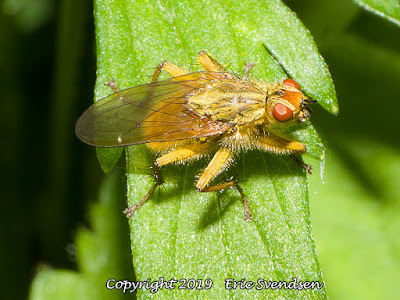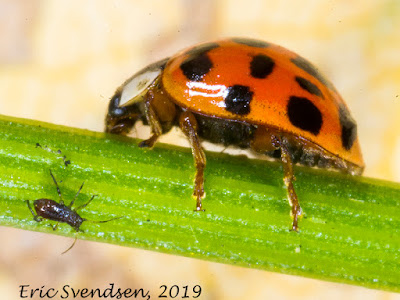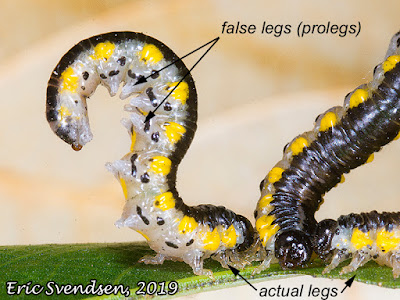The Golden Dung Fly.
 |
| Golden Dung Fly. |
One of the things I like about insects is their amazing diversity. Over a million species and counting, they have adapted to almost every non-marine ecosystem the planet has to offer. An example of this is the golden dung fly, whose primary niche involves utilizing mammalian fecal matter. They seem particularly fond of cattle droppings - more commonly called cow pies - and can be found around many farms. What was unusual about the one I photographed was that there wasn't a cow anywhere in sight.
The golden dung fly I photographed is a male, which are larger and yellower than females. They have the interesting habit of hanging around fresh cow pies hoping that a female will happen by. For whatever reason, there are many more males than females, which explains why females take their time choosing a suiter. The females can also receive the services of three different males and store their genetic material separately; apparently, they can select which of the contributor's sperm to use to produce offspring. They also can determine when it is the right time to allow fertilization to take place. After all, if she can't find dung with just the right qualities, her offspring will have a reduced chance of survival.
Both male and female dung flies will take dung as food, but it is the young that really excel at this. The adults are more likely to feast on other insects as they are predatory in nature, but will also collect nectar from flowers. This could have explained the presence of my subject, as it was on a flowering plant when I photographed it. The dung flies themselves are not a threat to man or beast and are somewhat beneficial because of their predaceous nature. The larvae will eat the young of anything they find milling about in the decaying patty they inhabit.
I shot this picture with my Panasonic FZ2500 one inch sensor camera. I had the macro mode enabled so I could focus closely; the focal length was a relative 69 mm. I was far enough away that the camera's flash unit could illuminate the subject without vignetting. Overall, it is a fair shot, although I had to use an almost 100% crop to obtain the shot I wanted. It was a reasonable result.



Comments
Post a Comment